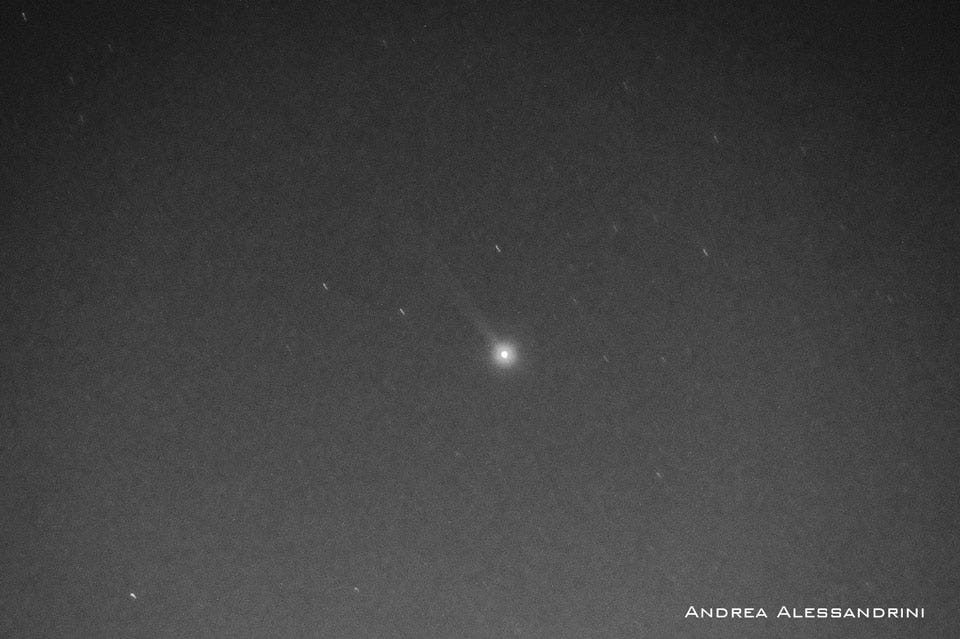NASA Astronomy Picture of the Day:
What is that fuzzy streak extending from Mercury? Long exposures of our Solar System's innermost planet may reveal something unexpected: a tail. Mercury's thin atmosphere contains small amounts of sodium that glow when excited by light from the Sun. Sunlight also liberates these molecules from Mercury's surface and pushes them away. The yellow glow from sodium, in particular, is relatively bright. Pictured, Mercury and its sodium tail are visible in a deep image taken in late May from Italy through a filter that primarily transmits yellow light emitted by sodium. First predicted in the 1980s, Mercury's tail was first discovered in 2001. Many tail details were revealed in multiple observations by NASA's robotic MESSENGER spacecraft that orbited Mercury between 2011 and 2015. Tails are usually associated with comets. The tails of Comet NEOWISE are currently visible with the unaided eye in the morning sky. Comet NEOWISE from Around the Globe: Notable Images Submitted to APOD
Photo by Andrea Alessandrini








.jpg?fit=crop&w=280&h=280&q=93)



















